TarraWarra Biennial 2025: We Are Eagles – Artist & Curator Interviews
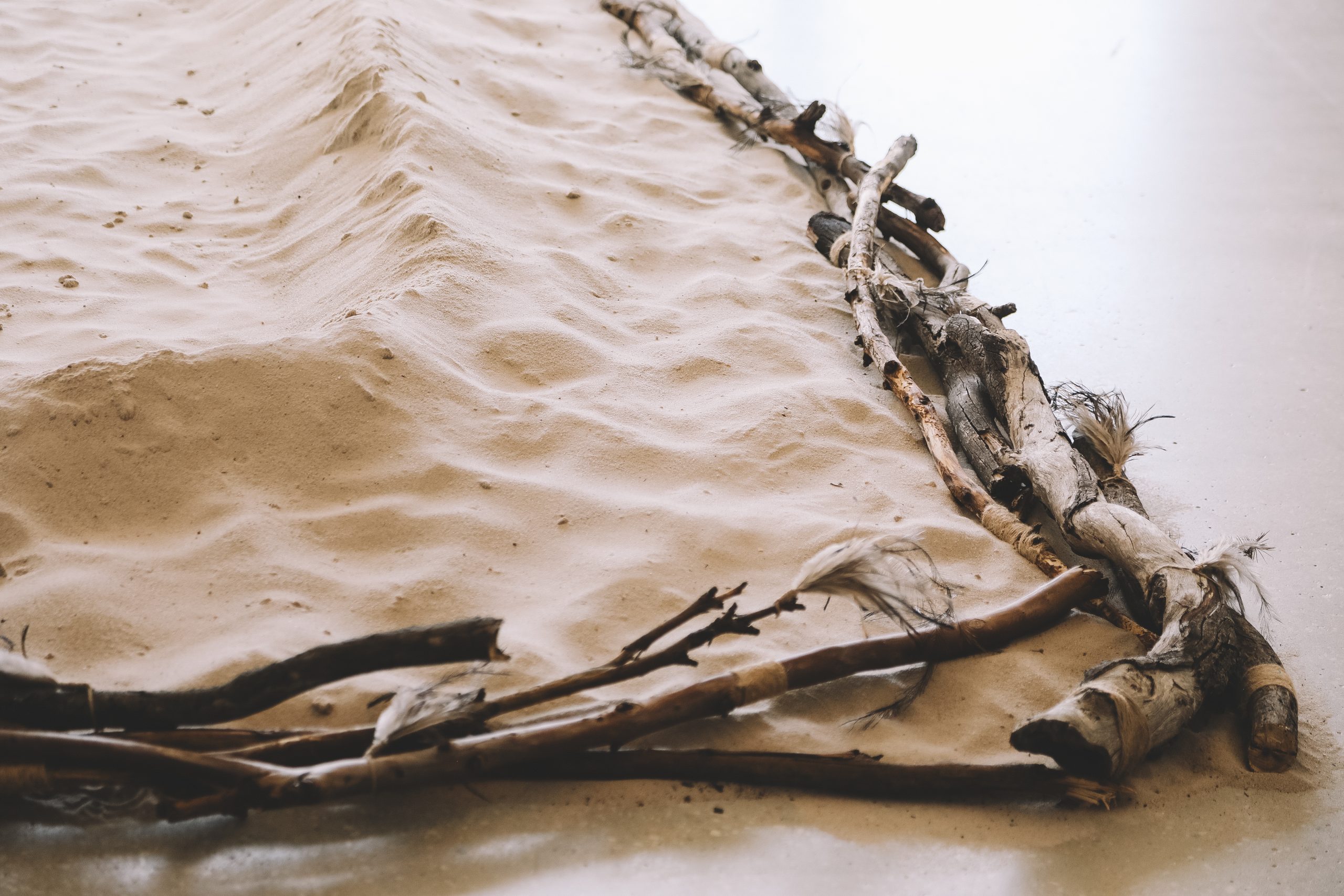
Moorina Bonini, Matha (Canoe) 2025 Courtesy of the artist Matha (Canoe) is a co-commission with TarraWarra Museum of Art and RISING, 2025, installation view, TarraWarra Biennial 2025: We Are Eagles.
Courtesy of the artist. Photo: Thomas McCammon
Information for Students and Teachers
Explore the exhibition through conversations with the curator and artists.
- Kimberley Moulton – Curator Interview
- Lisa Hilli – Artist Interview
- Shireen Taweel – Artist Interview
- Daniel Riley – Artist Interview
- Brooke Wandin – Artist Interview
Kimberley Moulton, Curator
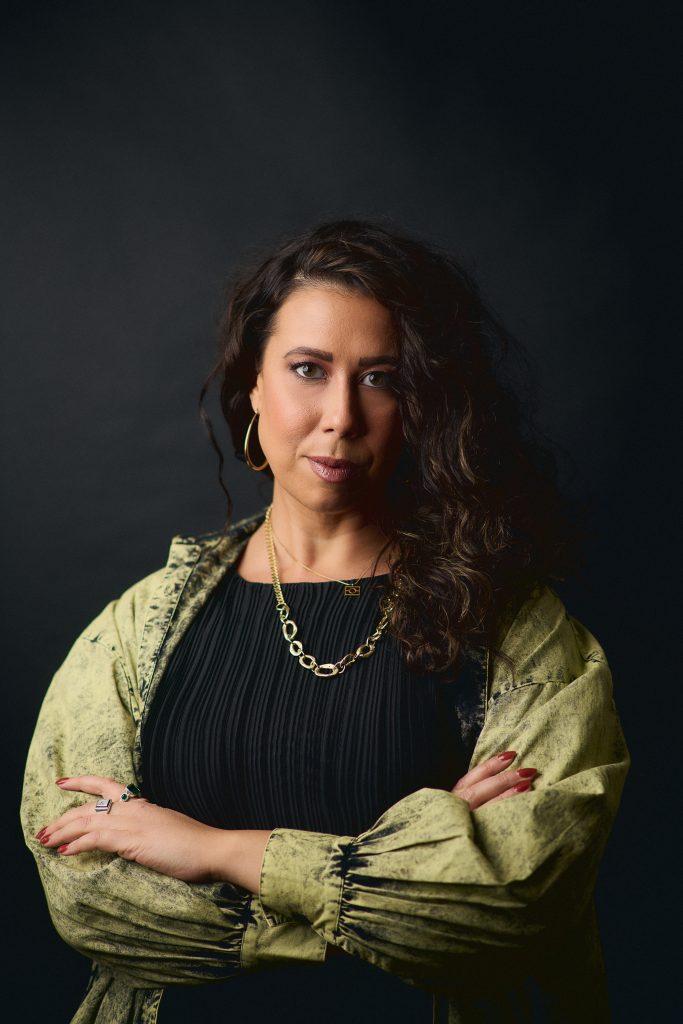
How did you decide upon the themes and title for this exhibition?
The title has its roots in the seminal south-eastern First Nations political movement of 1938 called the Day of Mourning, which was held on January 26 in Sydney on the 150th anniversary of the colonisation of Australia. First Nations leaders called for a resolution to be passed against the callous treatment of their people and for full citizen status and equality. In this meeting, activist and change agent Pastor Sir Doug Nicholls KCVO OBE stated that ‘we do not want chicken-feed … we are not chickens; we are eagles’. There were many important Aboriginal political leaders at this gathering, including my great Uncle William Cooper. This line from Pastor Doug has always resonated with me, and it speaks to rising in strength, soaring above negativity. It also acts as an acknowledgement to the Wurundjeri Country that I have been working on at TarraWarra Museum of Art, and the creator spirit Bunjil, who takes the form of the wedge-tailed eagle.
The exhibition has thematic layers and in departing from this important political moment of the Day of Mourning and ‘we are eagles’ sentiment in the nation’s history, the exhibition shares cross-cultural knowledge and stories through a network of three core themes: regeneration, disrupting coloniality and restoring spirit. As a response to this call to action made in 1938, the exhibition speaks to the act of rising in strength and power. It connects across cultures, beyond borders and through waterways, sky country and stars, to the totemic eagle and non-human connections, sharing the multiplicity of ways to connect to history, Ancestral knowledge and expansive futures.
The exhibition considers the creative practice of restoring the spirit of kin, place and object through the regeneration of knowledge and the relationality between cultural material, memory and place. It also looks at ways embodied knowledge disrupts coloniality and prescribed notions of identity within the Australian imaginary.
How were the artworks selected for this exhibition and what were some of the processes behind these decisions?
I have a curatorial methodology of revisitation, so often my exhibitions feature artists who I have worked with before or engaged in their practice in some way. My process was also to apply an Indigenised curatorial lens and methodology to the exhibition but to work with a range of contemporary Australian artists, not only First Peoples artists. In researching and connecting to artists’ practice I was drawn to artists who work on themes such as relationality to land and ideas of nationhood, artists who research cultural material and museum histories, artists who have a regenerative practice in reviving cultural knowledge, memory and language. The invitation was for new work from artists in response to the themes of the show, particularly ideas around regeneration, disrupting coloniality and restoring the spirit. Once I met with all the artists, we spoke about their ideas and my show, I shared research and my thinking, and it was a collaborative process. The artists all have extraordinary practices that are dynamic in research, cultural backgrounds and materiality, and in working with them I also aimed to balance the show in terms of film, sound, 2D work and sculpture.
As the exhibition’s curator, how did you work with the artists to create this exhibition?
Over the past two years I have been meeting with all the artists, starting with studio visits and zoom calls, then continuing to meet with them and doing site visits at the gallery to discuss their work and installation, and supporting wherever I can. I like to be guided by the artist as to how much time they want from me. I feel it’s important to not just email artists or invite them and then be hands off, I have a much more relational practice and want to truly engage with their thinking and what they would like to communicate. But ultimately I will be guided by them; for some artists it’s been meeting almost monthly, for others a phone call or zoom or email every few months to check in. Everyone is different. With Brooke Wandin I have also been connecting her with the historical collection at Museums Victoria/Melbourne Museum of which I am Curator Emeritus. I have a strong background in historical cultural belongings and the archive and its intersection with contemporary art. We have been working with a child’s Boomerang, or in woiwurrung it is called wangimu bubupal, that was collected over 100 years ago from the ground at Royal Park, Melbourne. I wanted to restore the spirit of the Boomerang, by that I mean to re-story the object beyond its colonial history as we know of it in a museum collection and events at Royal Park in the late 19th century and for living culture to be connected with it. Brooke and I have been speaking about the object, connecting and visiting, and I have shared my research with her on this. Brooke decided to re-story the wangimu bubupal using sound and woiwurrung language, so a sound piece accompanies the Ancestor object, along with weavings by Brooke. Similarly with the film by Daniel Riley I worked with Dan in the collections at the museum in 2021 where he connected to a Boomerang from his Wiradjuri Country. He made a film in response to this with collaborators and explored ideas around loss, Country, collections and the body as an archive. Dan’s practice is predominantly in dance so he was filmed in the collections dancing to them. This was a project a year in the making and because of Covid lockdowns in 2021 not many people got to see it, so I felt it was important to bring it into the exhibition as it speaks strongly to the themes.
How did you make decisions about the way the exhibition is laid out?
It’s important to think about flow and audience for exhibition making, so conversations around placement of work, hanging, how the audience will connect to the work in the physical space are important to have. It is also my role to conceptually connect the works and communicate what I am trying to share through my thematics. Line of sight is important in exhibitions for this, and playing with the windows and natural light of the gallery was important. Placing Brooke’s work and the wangimu bubupal (child’s Boomerang) at the beginning was very intentional, to acknowledge Wurundjeri Country and to anchor the exhibition in woiwurrung language, Ancestor knowledge and contemporary First Peoples culture. It really represents everything the show is about and guides people into the exhibition that features Indigenous and non-Indigenous artists and ideas that centre on regenerative practice and disrupting coloniality. Iluwanti Ken’s and Yaritji Young’s paintings are very large and hold immense presence, so giving them space on the walls was important. Nathan Beard’s sculptural works conceptually speak to Daniel’s film strongly so I wanted them in proximity to each other.
The placement of Maree Clarke’s sculpture of Waa the Crow in proximity to the window was also important, and, on the opposite wall is Jack Anselmi’s ceramics of long-neck turtles and small scar trees. Nadia Hernández’s installation needed space to breathe so we placed that in the main gallery to allow room. It’s important to think about sound and managing sound bleed which is unavoidable in galleries, so to mitigate this we put Shireen Taweel’s and Daniel’s works in their own cinema rooms to create intimate spaces and to contain the sound with their works. Some works are headphoned, including wani’s and Nadia’s, which allows for sound containment but also a closer experience for the audience member in connecting to their work.
The Vista gallery is a fantastic long space where we brought in some colour to the walls with Lisa Hilli’s and Lisa Waup’s work. The long gallery walls make for a perfect area for large horizontal hangings and installations such as Lisa Hilli’s photos and Lisa Waup’s large prints. We also have sculptural works by Moorina Bonini and Gunybi Ganambarr in this space, which add a dynamism to the long flat space. When curating, it’s not just about making it work in terms of theme, but in terms of physical space, light and audience flow. Access for all kinds of people with all kinds of ability is important.
Lisa Hilli, Artist

Lisa Hilli by Thomas McCammon
What inspires your art practice / artwork in this exhibition?
Discovering the body adornment practice relating to Tolai women was incredibly special to me, more so as I discovered this when I wasn’t looking for it. My Aunty Cinta recognised one of the objects depicted in some archival images captured by an amateur ethnologist from the late 1800s, that I had shared as part of a research project relating to a Tolai male body adornment item called Midi. My Aunty Cinta immediately retrieved this item, called a Ngut in my language, and that it belonged to her father.
There’s something about the way cultural objects are and have been fragmentally represented scientifically in the pursuit of academic knowledge that contrasts to the way Indigenous people recognise and see their material culture and provide the whole context: the making, the reason, the meaning and the value behind an object.
To see this ceremony re-enacted at my request was such a gift, a sacred gift that I held onto privately for ten years, because that’s how special and rare it was for me to discover it. I’ve only seen one other physical example of a Ngut and that was in the Humboldt Forum in Berlin, with very little information. I wanted to ensure I felt secure in sharing this intimate Tolai cultural practice between a father and daughter and that I was able to provide the same cultural context and Indigenous knowledge that my family so generously shared with me. Most importantly, I want to show that this practice is still active, just like the majestic volcanoes of my homelands.
Please describe your preferred choice of materials and techniques you use in your art practice.
I work at the intersection of Indigenous and institutional archives; the former being embodied knowledge and the latter written or documented knowledge. The reason for this is that colonial impact has fractured and transformed many Indigenous cultures, spiritually and linguistically, and some of the original sources of culture relating to my people are sitting dormant in public and private collections outside of Papua New Guinea. I don’t live in Papua New Guinea. I was born there and have spent much of my life in Australia, where much of the material culture of my people is stored in museum collections. Therefore, this is one entry point for access to my ancestral practices.
Much of my work is about repairing, remaking, re-contextualising and renewing what remains inside and outside of museum collections, and utilising my own Indigenous knowledge as well as the embodied knowledge of my people to make sense of our now fragmented pasts.
Often it is photographic images that really linger with me, sometimes for years. There will be moments when I will be researching an archival collection in Australia or in Europe and a historical photograph will ignite my gaze and beckon me to look deeper into the image of what’s being represented.
At times I often don’t know how or when this quiet request from the photograph will be resolved. The experience and memory of the image, which I always document and stash away in my personal research files, just sits quietly waiting like a seed, to be watered and given the right environment with further information to show up beneath the metaphorical surface of archival collections.
This occurred with the creation of some of the images from the Vangun Pa series. I recall seeing a Ngut being worn by Tolai men in the late 1800s and again in the 1950s in the Australian Methodist Missionary photographic archives held in the State Library of NSW.
Please share some creative methods you use in your art practice.
I’m always aspiring to create a succinct language between photography and textiles. I adore the analogue techniques of photography and am drawn to archival images because the human hand is involved in painting the emulsion onto a glass plate sensitised by light to capture and fix an image. I really love the imperfection and fragility of black and white images and how this contrast can be a perfect canvas to insert layered meanings through the addition of textiles. The reason I love textiles, which includes body adornment, is that they are imbued with so much meaning and language—I personally think that’s why the word ‘text’ is in textiles.
I use textiles in my photographic works to reveal hidden or overlooked histories that are often omitted from traditional history books. A recent example of this is in my photographic series More Than Just ‘His Wife’ (2021–25), which shows a Tolai woman called IaWarwakai who married and had an interracial child with Albert Hahl, former Imperial Judge and later, Governor of German New Guinea. I highlighted through colour the batik textile fabric worn by IaWarwakai in the photograph to show the transformation of Papua New Guinean women’s clothing via Australian and European missionary wives, and the direct influence of Dutch colonialism on German colonialism in Papua New Guinea.
Centring and revealing the lived experiences of Papua New Guinean women is at the core of my practice. This shift occurred during a creative commission for the Australian War Memorial looking at the war history between Australia and Papua New Guinea from the Second World War. I created a work that focused on a little-known history of Papua New Guinean nuns—the Daughters of Mary Immaculate (F.M.I.) of Vunapope. When I focused only on Papua New Guinean women, I found everyone, including interracial children who were detained in a prisoner of war camp when Rabaul was occupied by the Japanese military. Centring Papua New Guinean women was at first uncomfortable as a methodological approach but was richly rewarded in that it empowered me to have female-to-female conversations with living F.M.I. Sisters who shared with me information they may not have felt comfortable sharing with men.
How has participating in the 2025 TarraWarra Biennial supported the development of your art practice?
Working with Kimberley Moulton as guest curator and strong Yorta Yorta woman for the TarraWarra Biennial has enabled a sense of deep trust and respect for the work I’ve chosen to share with the Australian public. The reason behind this is more than just Kimberley’s Indigeneity, it’s her approach to curating and respecting Indigenous agency; that’s a really important value for me. My participation in the Biennial via Kimberley has allowed me to use my personal archive of images and to revisit and assemble the work that has been sitting silently in my own archive for it to surface, just like the research I do in public archives. How beautiful and validating is that!
Is there something important you can share with students about your own journey to becoming a professional artist?
An artistic practice is exactly what it means—you must practise at your art. Just like professional sportspeople train and strengthen their abilities to become better at their chosen sport, artists must do the same. The understanding of your artistic practice comes in the making. Sometimes it’s intense, other times it’s frivolous. Understanding how you work as an artist is the most powerful gift you can give yourself to navigate the enduring practice of being an artist. When you understand why you make the things you are compelled to make, that is the magical moment and motivation of being an artist.
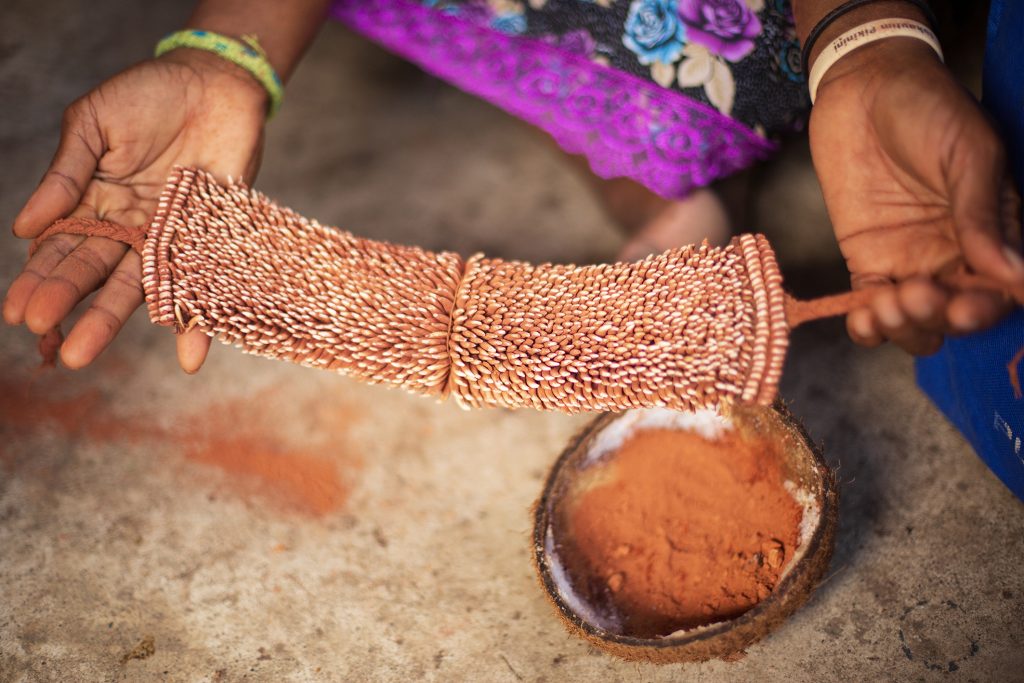
Lisa Hilli, Rakaia (Spirit of the Volcano) from the series Vangun Pa (Awaken) 2015. Courtesy of the artist
Shireen Taweel
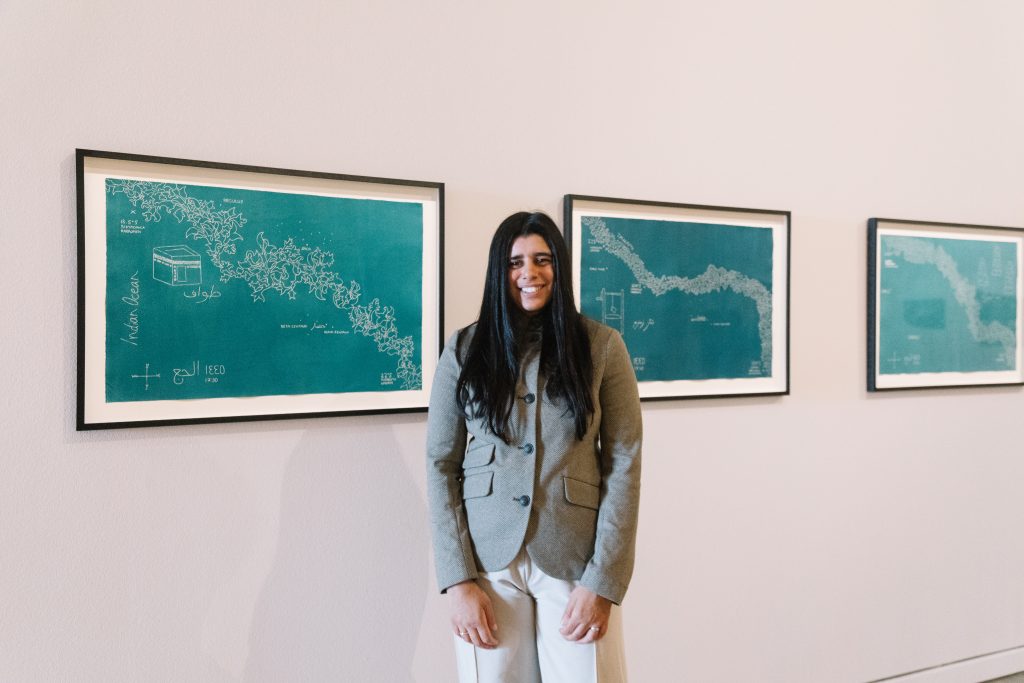
Shireen Taweel by Thomas McCammon
What inspires your art practice / artwork in this exhibition?
For the past few years my practice has been informed by ongoing research into Arabic science and Islamic cosmologies. My particular interest is the influence of astronomy and celestial navigation devices and technologies on the histories of migration and pilgrimage. The artwork in the TarraWarra Biennial is the documentation of a personal pilgrimage, while also presenting pilgrimage as an off-Earth practice and futurism which considers equitable futures in space.
Please describe your preferred choice of materials and techniques you use in your art practice.
Copper is central to my practice. During the first years of undergraduate studies at art school, I developed a deep interest in the metal, and the artisan techniques employed by the coppersmiths of the MENA region (Middle East and North Africa). Processes and techniques are directed by my research and concepts. The work for We Are Eagles involved an understanding of Arabic astronomy, mathematics, heritage copper smithing techniques, sound design and film.
Please share some creative methods you use in your art practice.
Most of my projects begin with in-depth research, mostly reading and extensive time undertaking fieldwork which may involve working from observatories, dark sky parks, museum collections, and in libraries and archival spaces.
How has participating in the 2025 TarraWarra Biennial supported the development of your art practice?
The TarraWarra Biennial provided me with a platform on which I could present a significant and ambitious project. Without the generous support and trust of Kimberley Moulton and everyone from the TWMA team it would have been difficult to realise the exhibition of a work of this scale. It has been very rewarding to be able to devote so much energy to the project, knowing it eventually has a public platform, both local and international.
Is there something important you can share with students about your own journey to becoming a professional artist?
I believe the art we make doesn’t exist in a vacuum. I’ve grown in my career as an artist through the invaluable experience of connecting with my community and the generations of creatives who have come before me, putting research and artworks within new/different contexts, connecting across different fields of research and practice, and always experimenting.
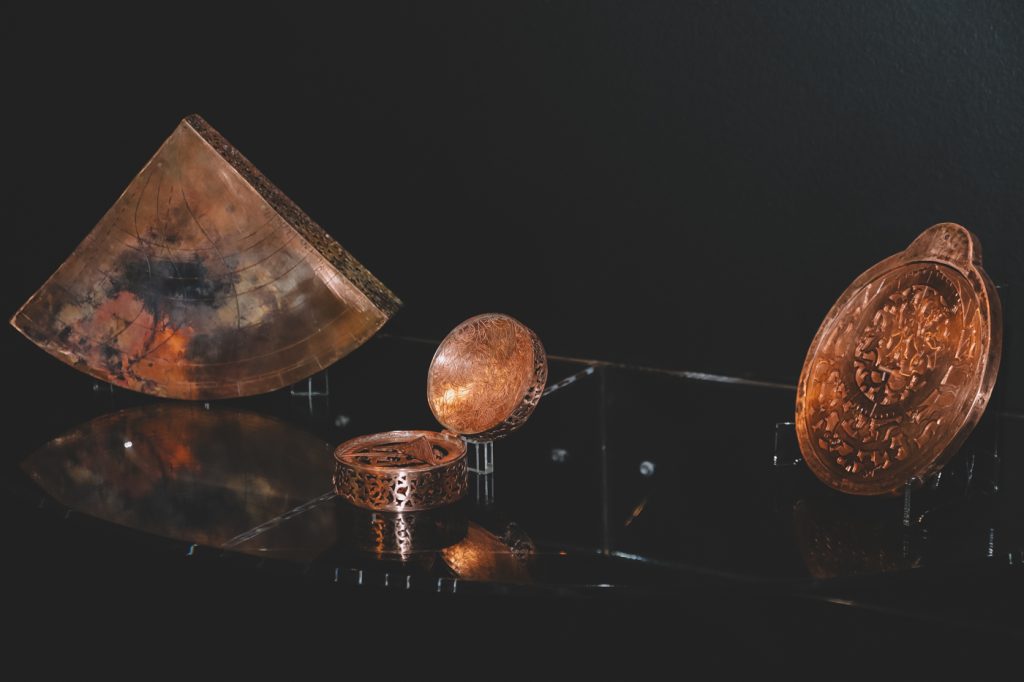
Shireen Taweel, Southern Celestial Astrolabe 2024, Southern Celestial Quadrant 2024, Qibla + Compass 2024, installation view, TarraWarra Biennial 2025: We Are Eagles. Courtesy of the artist. Photo: Thomas McCammon
Daniel Riley
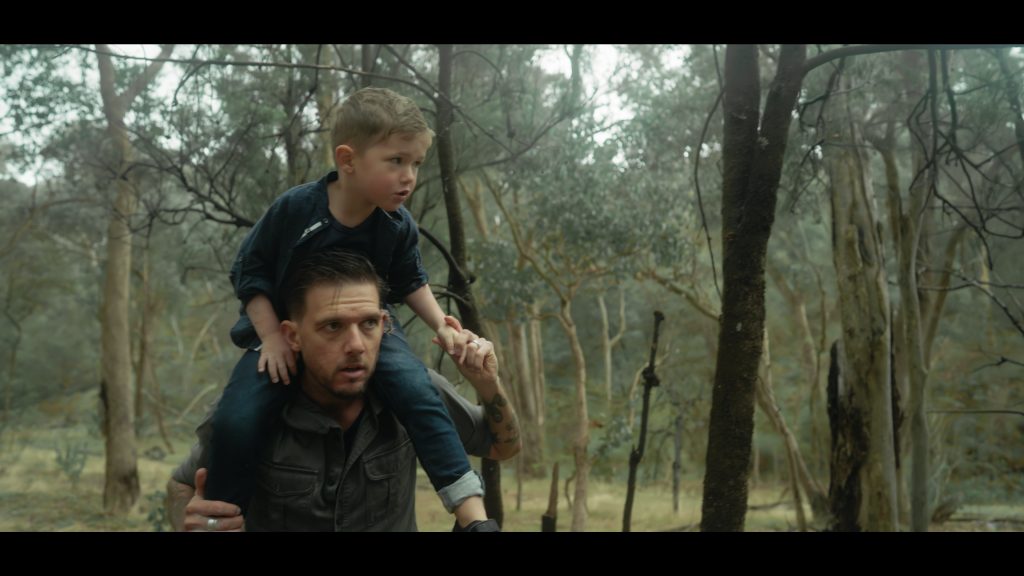
Daniel Riley, mulunma – Inside Within 2021 (video still). Courtesy of the artist. Photo: Cass Mortimer-Eipper
What inspires your art practice / artwork in this exhibition?
My art practice is inspired by my drive to tell our stories in contemporary ways. I am driven to open up conversations and respectful dialogue around our extraordinary 75,000+ year history. I want to highlight the importance of our enduring Cultural connection to place, and how we reflect and explore this now, across the social, cultural and political complexities of our current time.
My work, mulunma – Inside Within is intrinsically connected to the body as a tool for storytelling, communication and connection. As a dancer and choreographic artist, the body is my tool of choice to connect to my culture and my identity. I am constantly inspired by the endless possibilities of the body and how it can connect us all to larger ideas, and to feelings that are beyond words. When we move, we connect to a deeper instinctual method of communication and connecting that is both physical and intellectual. In this space we don’t just connect with each other, but also with time in the past, present and the future.
Please describe your preferred choice of materials and techniques you use in your art practice.
Being a dancer, choreographer and director, the body is my tool of choice. I am interested in how to craft a body/bodies in space to elicit emotions, feelings and to tell stories, that are beyond words. These connect to our deeply intelligent and instinctual ways of communication, drawing stories from across time and place.
Please share some creative methods you use in your art practice.
I begin with research in and around my chosen idea and start to collate a range of materials that speak either directly or indirectly to it, such as printed materials, writings, films, music, visual art, books and newspaper articles. I find current news articles very useful as I find inspiration in the current social, cultural and political conversations that are circulating at the time of making and presenting work. For me this speaks to my interest in reflecting the world at that time, whilst also drawing inspiration from my Cultural explorations into my identity and practice, drawing time and place together to tell contemporary stories in contemporary contexts.
How has participating in the 2025 TarraWarra Biennial supported the development of your art practice?
It’s been wonderful to have my work reach further afield and to be shared with new audiences. The Biennial is a milestone event, and I’m very grateful and thrilled to be sharing my work, in support of curator Kimberley Moulton’s vision, and for it to sit beside many brilliant artists, all invested in their art and their storytelling methods.
Is there something important you can share with students about your own journey to becoming a professional artist?
Be resilient and trust your instinct. To be a professional dancer is a difficult and ultimately incredibly rewarding career choice, as with any career in the performing arts. It takes courage and an internal drive to keep forging forward. But what a gift it is to be an artist and find ways to craft stories and share those with audiences. Also, take courage each and every day and create what you believe in.

Daniel Riley, mulunma – Inside Within 2021, installation view, TarraWarra Biennial 2025: We Are Eagles. Courtesy of the artist. Photo: Thomas McCammon
Brooke Wandin

Brooke Wandin
What inspires your art practice / artwork in this exhibition?
Country and language inspire me and are a constant source of wonder. In this exhibition the wangim (boomerang) can be viewed as a beautiful Ancestor object. It can also provide an opportunity to expose little-known stories of people and place. The wangim invites curiosity and further independent investigation.
Please describe your preferred choice of materials and techniques you use in your art practice.
In my practice I might use raffia, charcoal, paper or pigments from Country to make paint. I’m not sure I have a favourite. I share woiwurrung too, as speaking and listening to language is a vehicle to the ancient past, strengthens my identity and restores my spirit.
Please share some creative methods you use in your art practice.
Immersing myself in Country is an important foundational step in my practice. I visit the place of the object or story I’m investigating. I’m a research nerd for sure! Another way of working is recreating archival material, emphasising my perspective, a wurundjeri woiwurrung perspective.
I enjoy collaborating with other artists. Often, I find collaborating opens possibilities that I could never have imagined on my own.
How has participating in the 2025 TarraWarra Biennial supported the development of your art practice?
While making this work, my confidence has grown in experimenting with sounds in woiwurrung. This exhibition has allowed me to interrogate and sit with a shameful part of our history while also continuing to restore my ancient language.
Is there something important you can share with students about your own journey to becoming a professional artist?
Create in any way that makes sense to you! Create for yourself! An important and enjoyable part of being an artist is thinking about what you would like to create, dreaming it into existence, then making it happen!
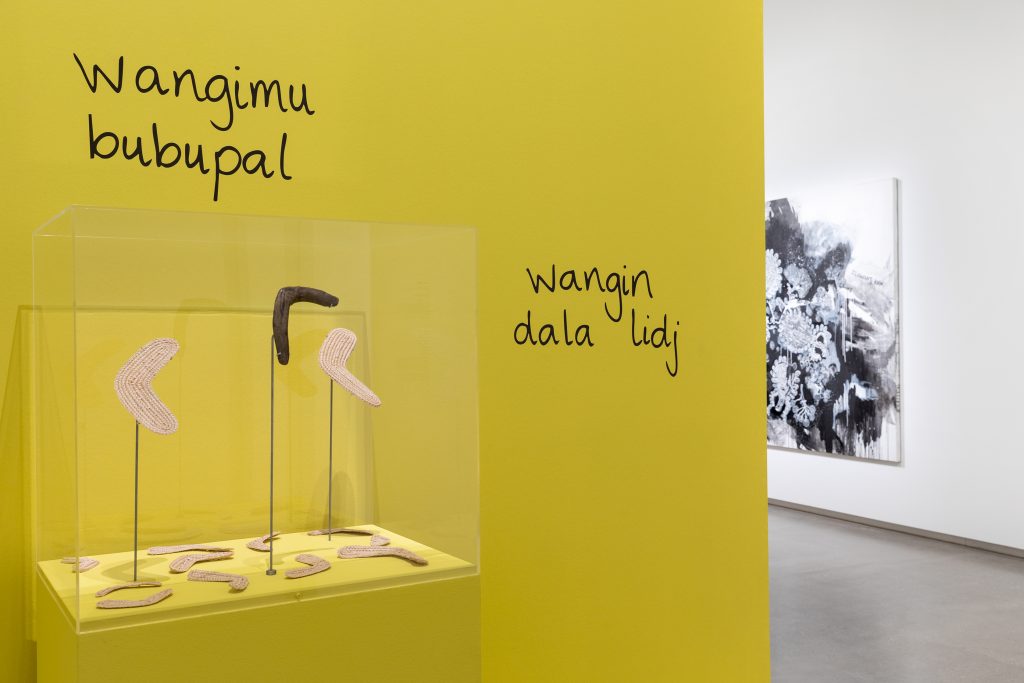
Ancestor, wangimu bubupal: a child’s boomerang c. 1880s (woiwurrung language) ‘found in Royal Park about 1920, just under surface of the soil’ First Peoples Collections, Museums Victoria X 43500
*****
Are you a teacher or educator? Join our Learning & Engagement mailing list to get occasional updates from our team about school tours, education resources, personal development sessions and other education updates.
Read more
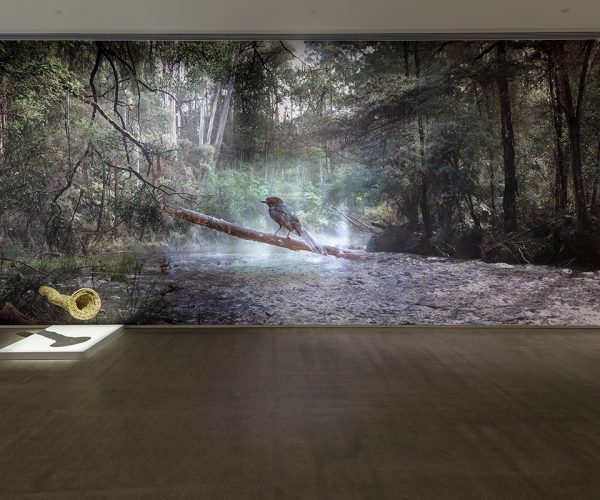

Curator walkthrough of WILAM BIIK
Curator Stacie Piper walks through WILAM BIIK, a significant First Nations exhibition WILAM BIIK is an exhibition of cultural consciousness and knowledge, of an unsevered connection between First Peoples of South East Australia and their Country, over thousands of generations. Header image: Installation view, WILAM BIIK, TarraWarra Museum f Art, 2021. Works by Djirri Djirri Wurundjeri […]
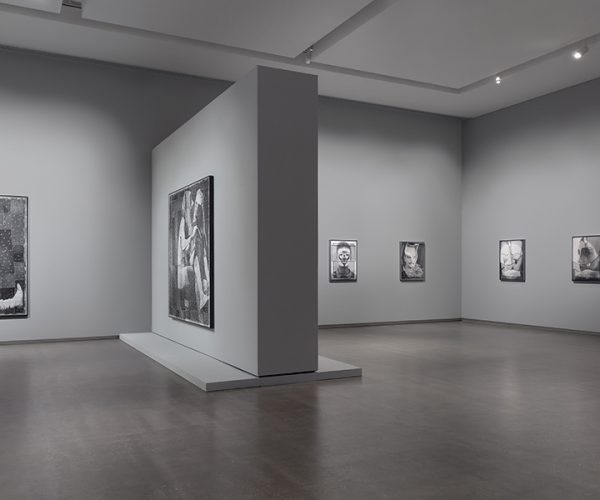

Curatorial conversation: ‘David Noonan: Only when it’s cloudless’
A curatorial conversation Listen to this curatorial conversation recorded live in the gallery between TarraWarra Director, Victoria Lynn, and artist David Noonan. While not a guided tour, this recording is an interesting insight into the solo contemporary exhibition David Noonan: Only when it’s cloudless, curated by Victoria Lynn. David Noonan: Only when it’s cloudless, curated […]
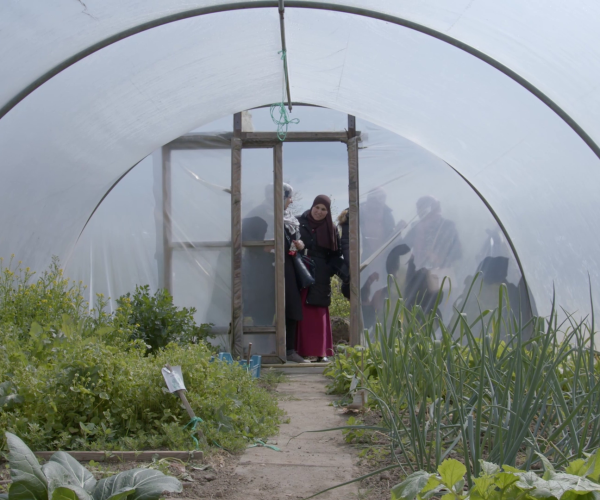

Curatorial conversation: Charles Esche on The Soils Project
A curatorial conversation Director of Van Abbemuseum, the Netherlands, Charles Esche shares interesting insights on how soil is both something that is unique to each of us and also something we share – and why looking into the past to understand the present day is fundamental to creating a better future for all. The Soils […]
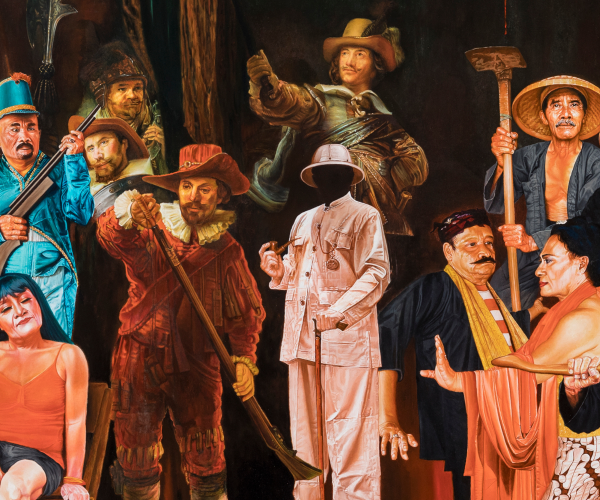

Curatorial conversation: Struggles for Sovereignty on The Soils Project
A curatorial conversation Watch this video with Eliesta Handitya and Gatari Surya Kusuma from activist collective Struggles for Sovereignty based in Yogyakarta, Indonesia. They speak about The Soils Project and in particular the effects of ongoing ecological issues and their work of bringing diverse communities together to address the complexities of deforestation, extraction and justice […]
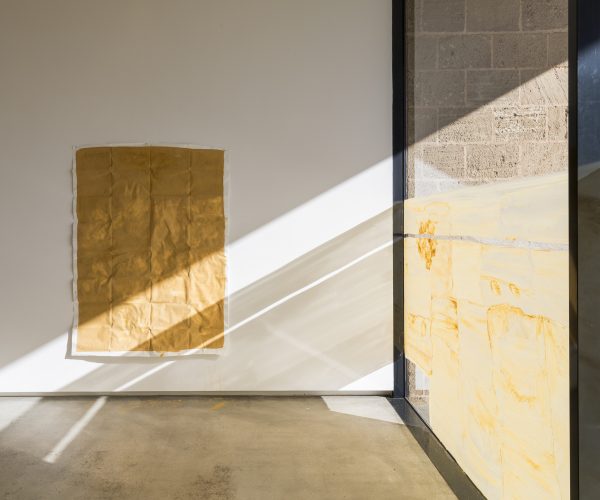

Curatorial conversation: Victoria Lynn on The Soils Project
A curatorial conversation TarraWarra Museum of Art Director, Victoria Lynn speaks about The Soils Project and this particular iteration of an ongoing research-based experimental project developed in collaboration with leading contemporary arts museum the Van Abbemuseum in Eindhoven, the Netherlands and Struggles for Sovereignty, a collective based in Yogyakarta, Indonesia. The Soils Project arises from […]


The making of (SC)OOT(ER)ING around Su san Cohn and Eugenia Raskopoulos
Information for Students and Teachers. Learn more about the exhibition (SC)OOT(ER)ING around as the TarraWarra Learning and Engagement team investigate the making of the exhibition with craft artist Su san Cohn, visual artist Eugenia Raskopoulos, and exhibition curator and Museum director, Dr Victoria Lynn. What is the title of this exhibition and how was it decided […]
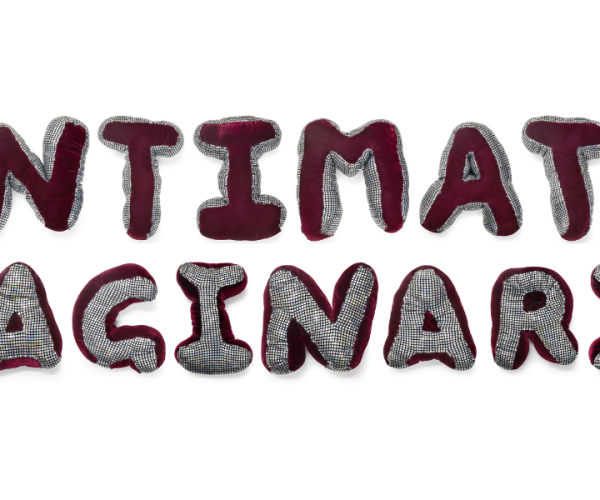

The making of Intimate Imaginaries: Q&A
Information for Students and Teachers. Learn more about the exhibition Intimate Imaginaries as the TarraWarra Learning and Engagement team explore the inspirations, techniques, and personal insights with the artists and curator Anthony Fitzpatrick. Intimate Imaginaries is a landmark exhibition celebrating the innovative practices of 13 artists from Arts Project Australia. Download the PDF to learn more. […]


The Soils Project: Diewke van den Heuvel
Diewke van den Heuvel speaks about her work Melting Heart. In this poetic ode, Diewke bears witness to the disappearing glacier. Climate change, a mostly hidden force, becomes visible as Diewke visits the Aletsch area in the Alps. The largest glacier of the Alps, melting rapidly, will vanish in 70 years. You’re invited to […]